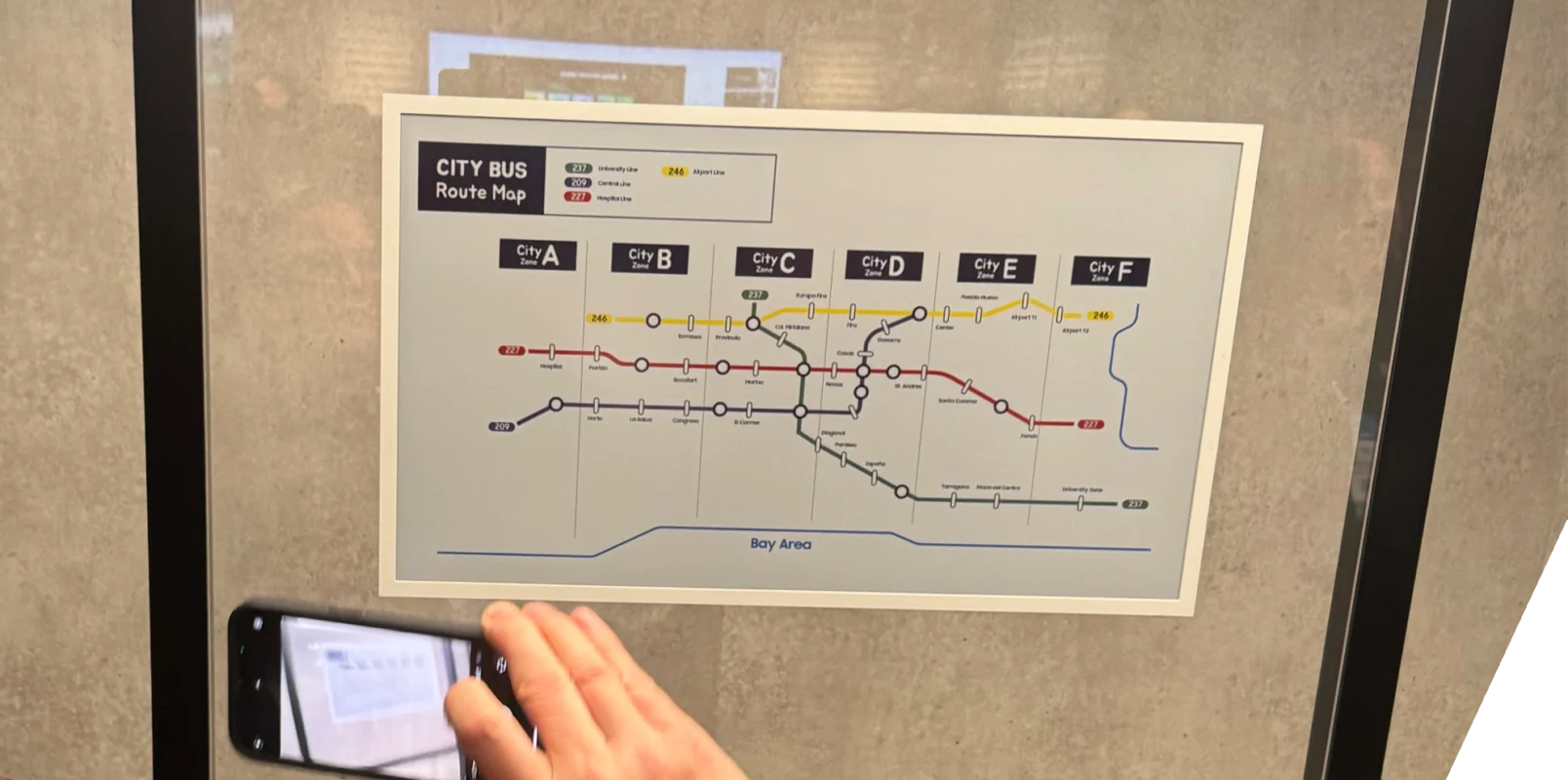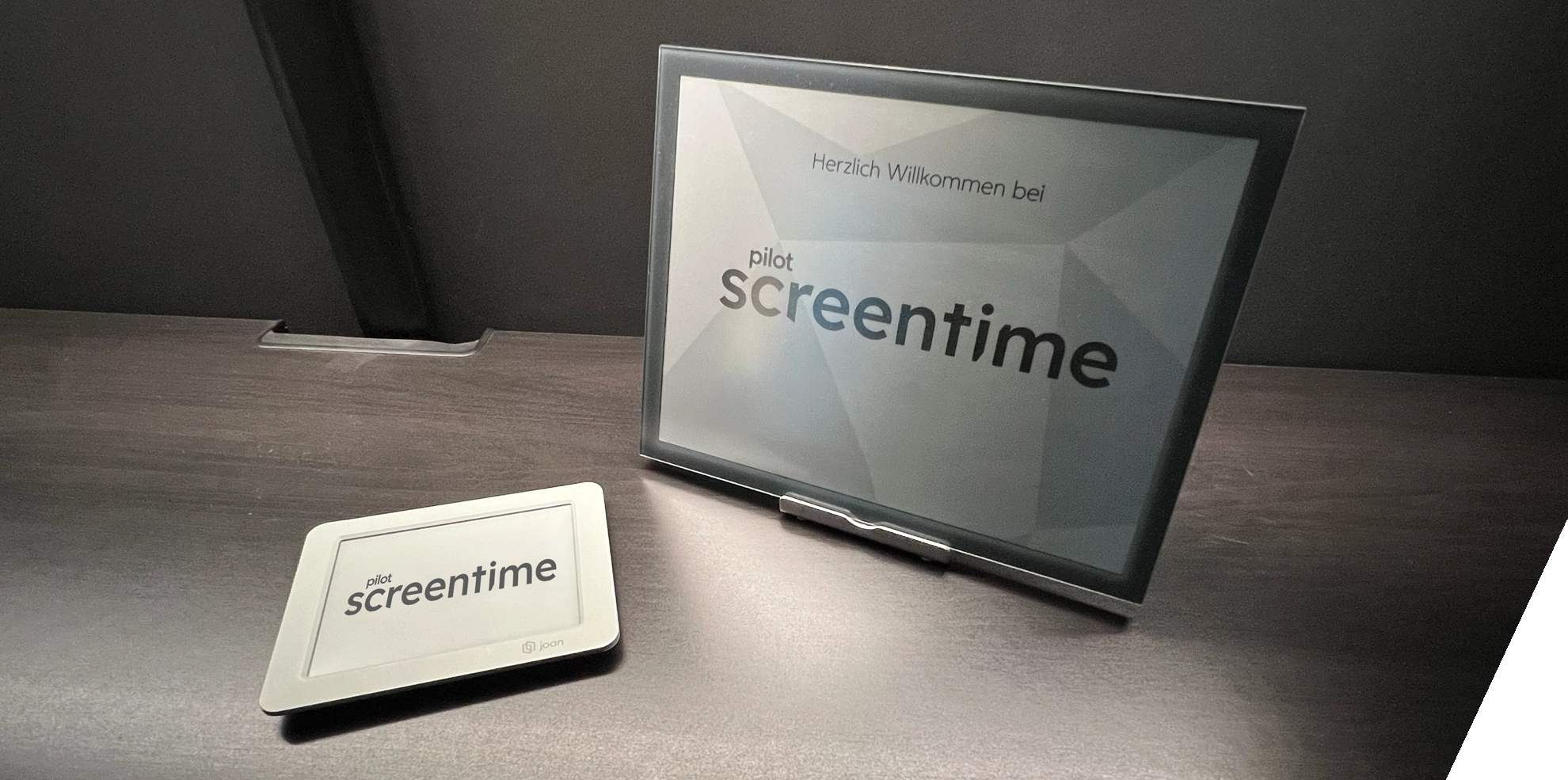e-Ink – an efficient and sustainable alternative to conventional LCD and LED display technology
15.07.2025
Companies and organisations are constantly looking for innovative ways to make their communication strategies more effective and sustainable. One of the most exciting technologies gaining importance in this context is e-Ink technology. eInk technology is increasingly establishing itself as an attractive alternative to traditional LCD and LED screens. In this blog post, we take a closer look at how e-Ink works, explain its advantages over conventional displays and show how and where this technology is already being used successfully.
How do e-Ink screens work?
Why e-Ink only consumes power when content changes
eInk is based on electrophoretic principles: in a black and white screen tiny capsules containing black and white particles are controlled by electric fields to display text and images. The “pixels” are not made visible by electricity, but only change colour when controlled by electric fields.
This technology has become well known primarily through e-readers such as the Kindle. But beyond books, e-Ink also opens up completely new possibilities in the field of digital signage.

An overview
Advantages on e-Ink compared to LCD and LED screens
Energy efficiency: One of the biggest advantages of e-Ink is its extremely low power consumption. Unlike LCD, OLED and LED displays, e-Ink screens only require power when the content on the screen is updated, i.e. changed. Displaying static content does not require any power. This drastically reduces energy consumption and minimises operating costs.
Excellent readability: e-Ink displays are glare-free and offer a paper-like appearance. This makes them very easy to read even in direct sunlight and easy on the eyes – ideal for outdoor areas or bright indoor environments.
Flexibility: Thanks to their slim and flat design, e-Ink displays can be easily integrated into a wide variety of environments. This makes them perfect for mobile applications or locations with special space requirements, such as product shelves. The technology is therefore frequently used for digital price tags or electronic self labels (ESL).
Environmental friendliness: Since no backlighting is required and the eInk technology does not consume any power during operation, its use reduces the ecological footprint. Taking digital price tags as an example, the small displays are also more robust than paper or foil signs and do not generate any waste when a price tag is replaced. This not only saves companies money, but also allows them to operate more sustainably.

An alternative to LCD technology?
Colour, animations and sizeare still an issue
e-Ink is not suitable for content that is frequently updated (more than once a minute) and content that is animated. The time it takes to update an image on an e-Ink screen can be between 1-10 seconds at present. With the introduction of commercial colour eInk products in 2024 from companies like Philips, Samsung und LG there are a handful of applications where larger eInk 32 Zoll screens could find a use-case. Present colour e-Ink screens can not display the full colour range of a LCD or LED screen. Prices remain high for both larger black and white and colour e-Ink screens and the cost-use analysis typically still favours classical LCD displays in commercial digital signage scenarios.
Possible applications
Where the use of e-Ink technology makes particular sense
eInk is particularly well suited for applications where information changes infrequently and must remain clearly visible at all times. Typical areas of application are:
- Electronic price tags (ESL) in retail, which can be updated easily and flexibly without high power consumption
- Information displays at train stations, airports or on public transport
Conclusion:
e-Ink technology offers an exciting alternative to traditional LCD and LED screens, especially for digital signage applications where energy efficiency, readability and environmental friendliness are crucial. By choosing high-quality e-Ink manufacturers and solutions, customers can modernise their communication while making their IT infrastructure more sustainable.



